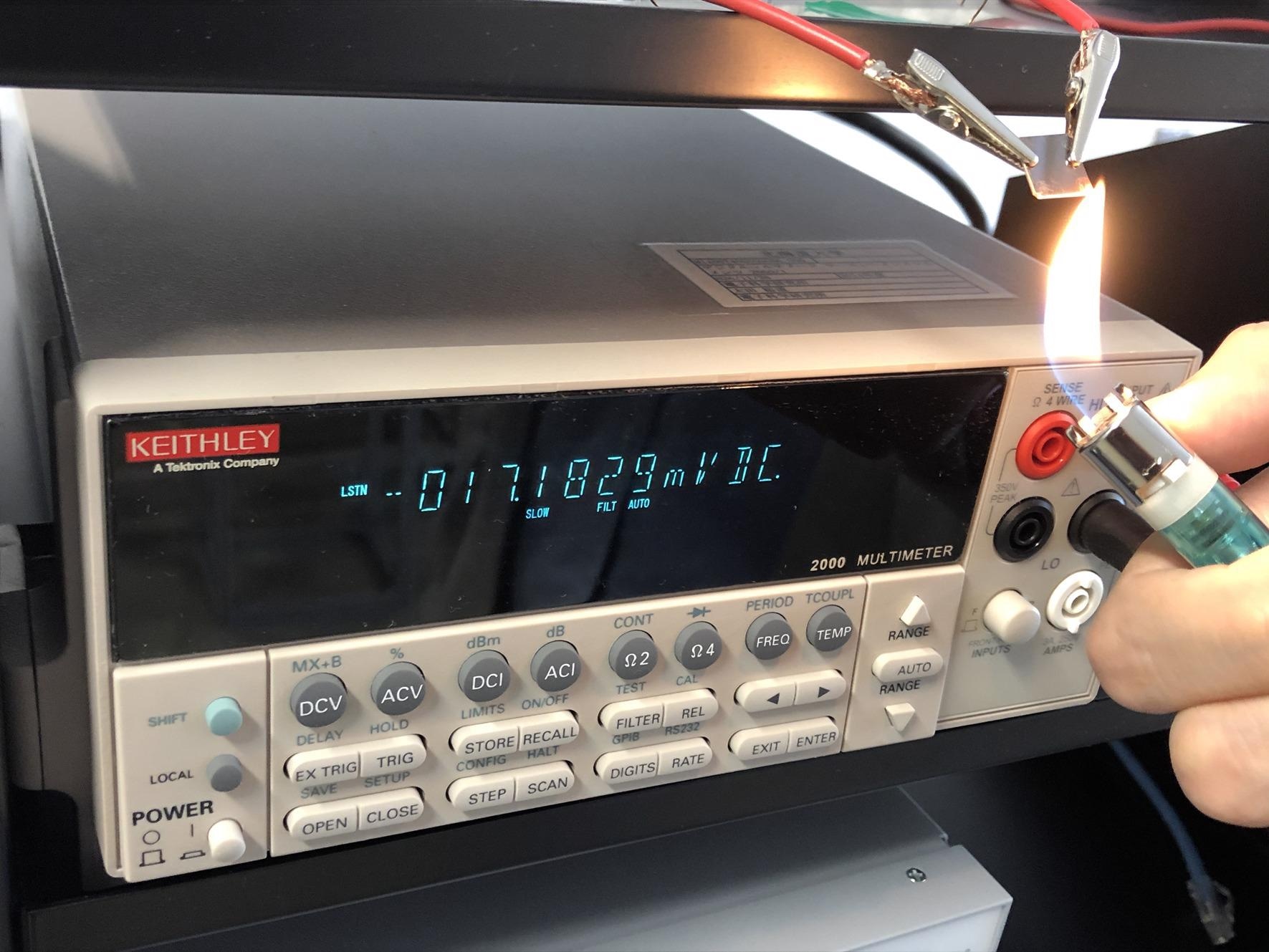Dec 23 2020
At Hokkaido University, researchers have created a layered cobalt oxide that features a record-setting thermoelectric figure of merit, which can be useful to improve the thermoelectric power generation.
 The barium-cobalt oxide film (top right, approximately 1 cm²) being exposed to an open flame to generate voltage. Image Credit: Hiromichi Ohta.
The barium-cobalt oxide film (top right, approximately 1 cm²) being exposed to an open flame to generate voltage. Image Credit: Hiromichi Ohta.
Waste heat is a highly potential source of renewable energy. But historically, the efficiency of using heat to produce energy has been considerably lower than solar, wind, or hydroelectric power.
Several materials can be used for producing energy from waste heat, but they are all hampered by various issues, spanning from low efficiency to low stability. However, since a huge number of industries produce enormous amounts of waste heat, there has been immense research in this field.
Led by Professor Hiromichi Ohta from the Research Institute for Electronic Science (RIES), Hokkaido University, a research team recently created a layered cobalt oxide with a record-setting thermoelectric figure of merit for metal oxides at ambient temperature. The results of the study have been reported in the Journal of Materials Chemistry A.
The Seebeck effect is responsible for thermoelectric conversion: an electric current is produced when there is a temperature difference across a conducting material. The heat-to-electricity conversion efficiency of metal oxides was historically very low. But thermoelectric devices based on metal oxides are highly preferred because of their environmental compatibility.
The thermoelectric figure of merit (ZT) is a crucial factor that governs the thermoelectric conversion efficiency of a device.
Hiromichi Ohta’s team has synthesized a layered cobalt oxide with a high ZT and high stability over a wide range of operating temperatures. The ZT of sodium-cobalt oxide, a well-known material in which sodium and cobalt oxide layers alternate, is very low, about 0.03.
However, the material created by Ohta’s team could realize a ZT of 0.11. The researchers substituted other alkali or alkaline earth metals like barium, strontium and calcium in the place of sodium.
At room temperature, the layered barium-cobalt oxide material featured a record-setting ZT of 0.11. This increase in ZT is the direct outcome of the reduced thermal conductivity of barium.
The researchers proposed that the atomic mass is inversely proportional to the thermal conductivity, leading to a higher ZT value. This is because heavier atoms inhibit the vibrations due to heating in the cobalt oxide layers.
More studies are needed to improve the composition of the material for higher stability and efficacy, as well as for identifying the most useful practical applications.
Hiromichi Ohta is the head of the Laboratory of Functional Thin Film Materials at the RIES, Hokkaido University. Thermopower modulation, thermoelectrics, optoelectronics and Iontronics are his areas of research.
Journal Reference:
Takashima, Y., et al. (2020) Layered cobalt oxide epitaxial films exhibiting thermoelectric ZT = 0.11 at room temperature. Journal of Materials Chemistry A. doi.org/10.1039/D0TA07565E.